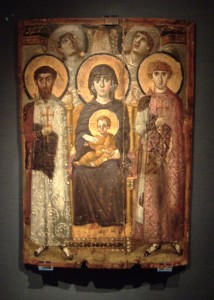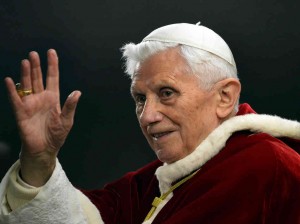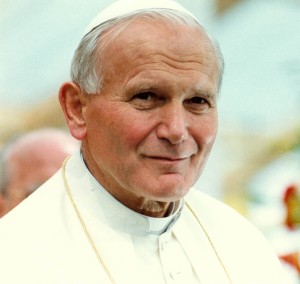Approaching a text without some sort of cultural, intellectual, or interested bias is most likely an impossibility. However, I mean for this article’s presuppositions to be, for the most part, minimal. Being a Christian, and writing for a Christian audience, I will be making assumptions about Jesus Christ, namely that he is in fact the son of God, and that he does in fact embody the fullness of divinity. But beyond the hypothesis that the Gospels are true, my hope is to read the stories and make commonsensical determinations based upon what they say. Perhaps another way of putting the point is that I intend for this article to be primarily “Biblical.

Following this simple text-centered methodology, I wish to explore an often overlooked character in the Gospel stories. Or if not overlooked, a character who does not receive the attention that I believe she so rightly deserves. The character I am referring to is Mary, the mother of God herself. When I set aside what I would consider my “philosophical truths,” and read the gospels as a true account of God’s most intimate contact with the creation, I am struck with the feeling that Protestantism’s lack of attentiveness to the importance of Mary is something of a theological tragedy. The remainder of this article will be comprised of a few considerations that I find plausible, followed by what I take to be a couple of the necessitated conclusions of said considerations.
First, a few words about what we as Christians believe about the cosmic importance of Jesus Christ. Christianity’s distinctiveness is built upon the belief that Christ is the son of God. Jesus, though being fully human, is also fully divine. The extent to which God is the eternally transcendent creator, our “ground of being,” is contained with Jesus Christ completely and absolutely. Jesus is God.
But as we also believe, Christ, though fully divine, is inextricably bound to his humanity. And as the Gospels tell us, Jesus, or God, has one biological parent- Mary. Although I am a 22 year old male, about as far from being a mother as one can be, I would like to raise some reflections about what it means to be a mother. First, if Mary is the mother of Jesus, and Jesus is God, that means that God Himself (Him insofar as He manifested as a male) grew within the womb of Mary, was fed at the breast of Mary, and was coddled and cared for in all of the ways that a loving mother relates to her child. God was dependent upon Mary. Another fact is that if you ask most any mother, and I am sure some biologists and psychologists, they will tell you that the intimacy found within the relationship of mother and child is most likely the most intense intimacy found in human relations. If Mary is the mother of God, as is claimed in the Gospel narratives, than we are ascribed to the belief that Mary shared an intimate contact with the divine beyond that of any other. She is as spiritually connected to God as a mother is to the child of her womb.
Now let’s move to the Crucifixion, the event in which Jesus atoned for the sins of mankind. Jesus, through suffering on the Cross, carried out the single most historically significant event. Now let’s once again turn our attention to Mary. If you ask any truly loving parent they would tell you that they themselves would rather undergo a crucifixion than see their beloved child be crucified. I am not claiming that Mary suffered more than Jesus, because Jesus is God things are irregular, but one cannot ignore the immense suffering of Mary as Jesus was crucified. And because of her intimacy with the divine, being the divine’s mother, I simply cannot believe that her sufferings find no place within the eternal significance of the event of the crucifixion, as if they were some accidental by product. Mary was bound to Christ through his birth, and remained bound to his sufferings as he hung on the cross.
So taking into consideration what I have stated above, which as I have said, I find to be quite basic truths of the Gospel story, what does this mean about Mary? Well, I believe that first and foremost that we cannot treat Mary as if she relates to God and eternity as just another human being, such as Paul or Peter. Mary is the mother of God; she is intimately connected to Christ in a categorically different way, I mean just go ask a mom about it. After thinking about God having a loving mother, and what that really would mean for Mary, I cannot comprehend why consideration for Mary would rarely arise. I simply cannot believe that Mary is not in some way closer to God than any other human who has existed, she is God’s Mother! The fact that many theologians would deem Mariology as “unbiblical” is, to me, commonsensically wrong. Think about what it means to be a Mother, what it would mean to be God’s mother, and what that would mean for Mary’s place in the big picture.


